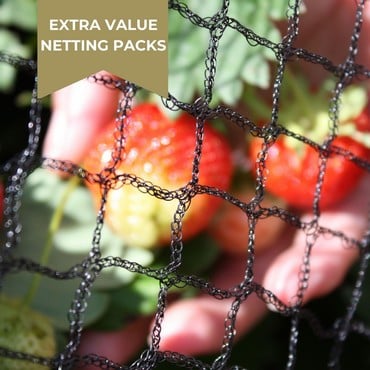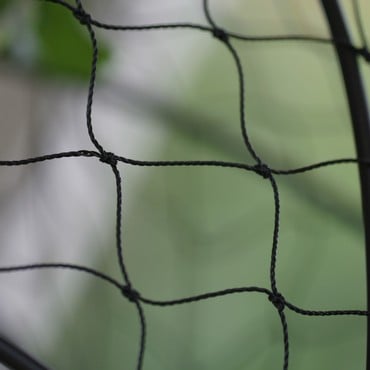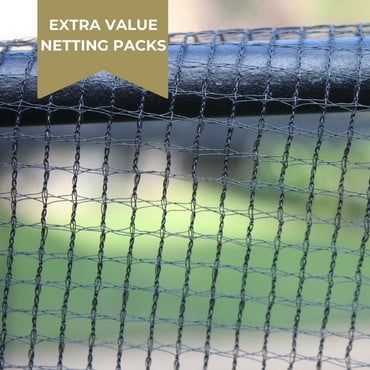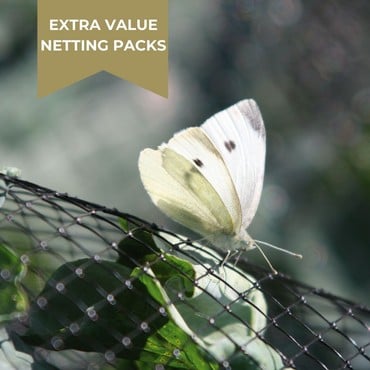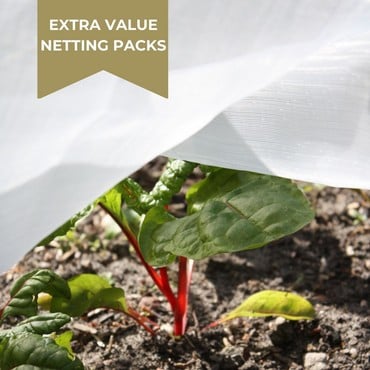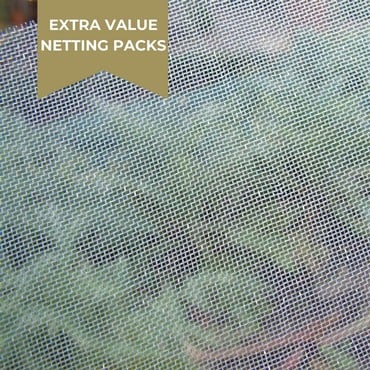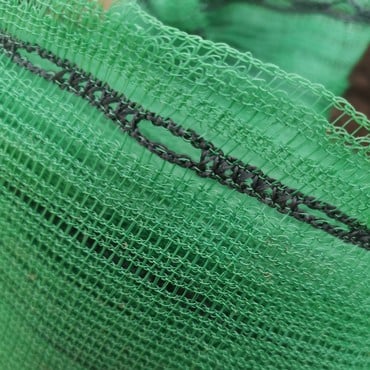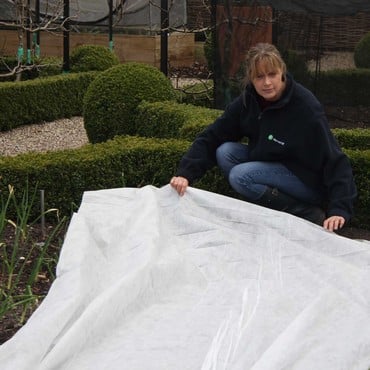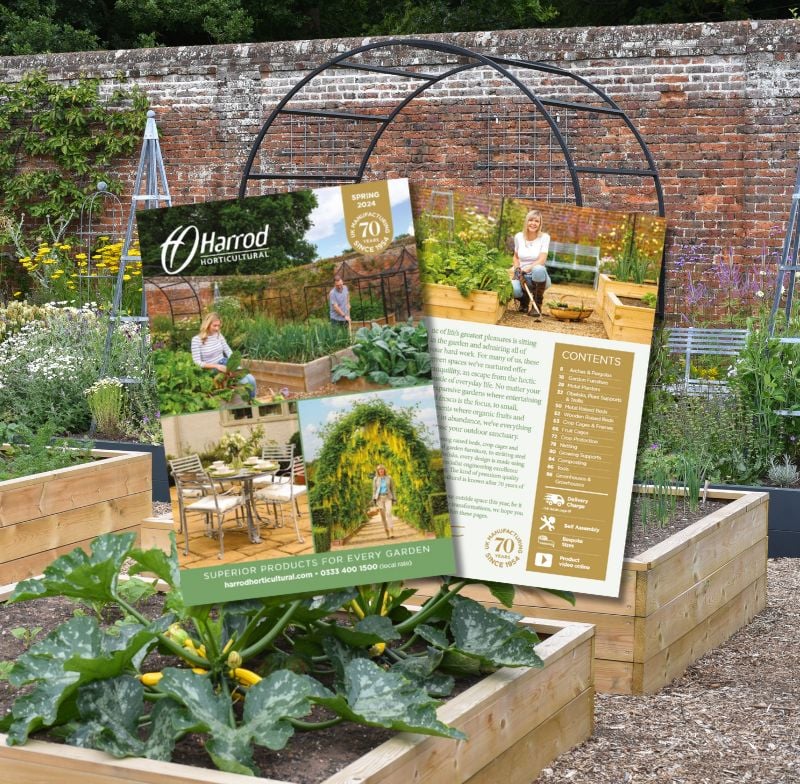Every gardener has been there, after spending countless hours tending, watering and feeding your plants a pest invades or some extreme weather damages your plants and quickly wipes out all your hard work...but you can easily stop this happening without using chemicals and it's a cheap solution too...
GARDEN NETTING
This has long been popular in the garden to protect plants, especially fruit and vegetables, from pest attack and bad weather, but with so many different types of netting it can be confusing which garden netting you need.
Let us help you, with some simple advice about different types of netting and how it can be used to protect your plants.
WHAT'S BEEN DAMAGING YOUR PLANTS?
It's important to 'Know Your Enemy' - understanding what has been attacking your plants is key to stopping it in the future. Determining whether it's birds, aphids or butterflies is the first step to helping you choose the right netting.
BIRD NETTING
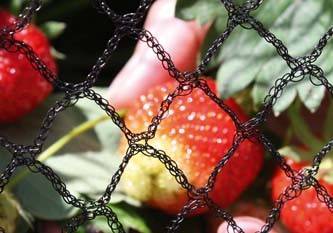
Birds can decimate fruit crops, taking the ripe fruit before you've had a chance to pick it - so what is the best and most cost effective way to protect your fruit bushes and plants?
Bird Netting, also known as Bird Stop Netting or Anti Bird Netting, has a 20mm mesh designed to stop even small birds. The netting can be draped over frames, cages and hoops to protect your plants. Our best selling fruit cages use bird netting on the roof and sides to protect fruit crops in the cage.
Designed to stop birds but let pollinators through the mesh, bird netting is available in a range of sizes and with value packs can work out as a very cost effective solution.
Pigeons a problem? There is specific Pigeon Netting available which is a much stronger knotted netting with a bigger mesh size designed specifically to stop pigeons getting to your crops!
BUTTERFLY NETTING
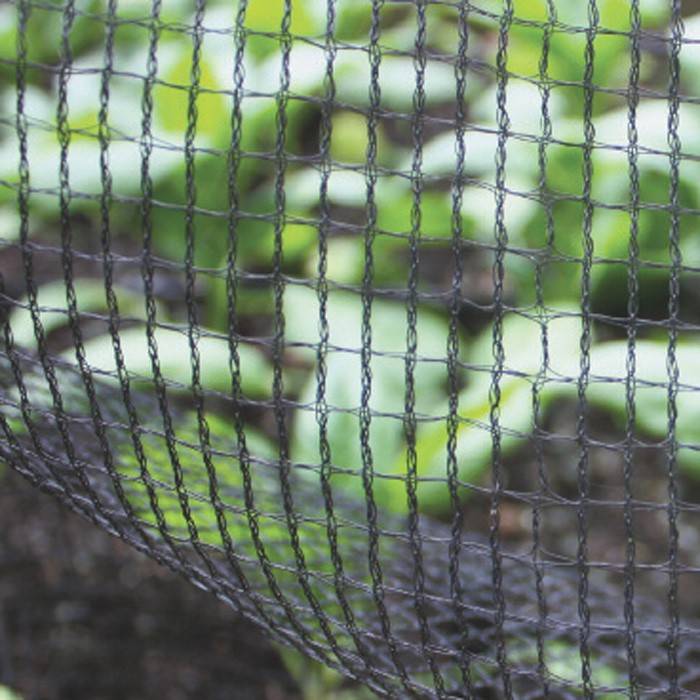 It's not so much the butterflies that cause gardeners problems, it's the fact that they lay their eggs on the leaves of plants which hatch into very greedy caterpillars.
It's not so much the butterflies that cause gardeners problems, it's the fact that they lay their eggs on the leaves of plants which hatch into very greedy caterpillars.
Caterpillars can chew their way through plants quicker than you would expect, and if a butterfly lays it eggs on one of your plants then you can quickly see your precious crop destroyed.
Butterfly Netting has 7mm mesh size, which stops butterflies getting through to your plants. This can also be put over frames, cages and hoops to protect your plants - many people cover their fruit cages with butterfly netting to further protect their plants.
INSECT MESH
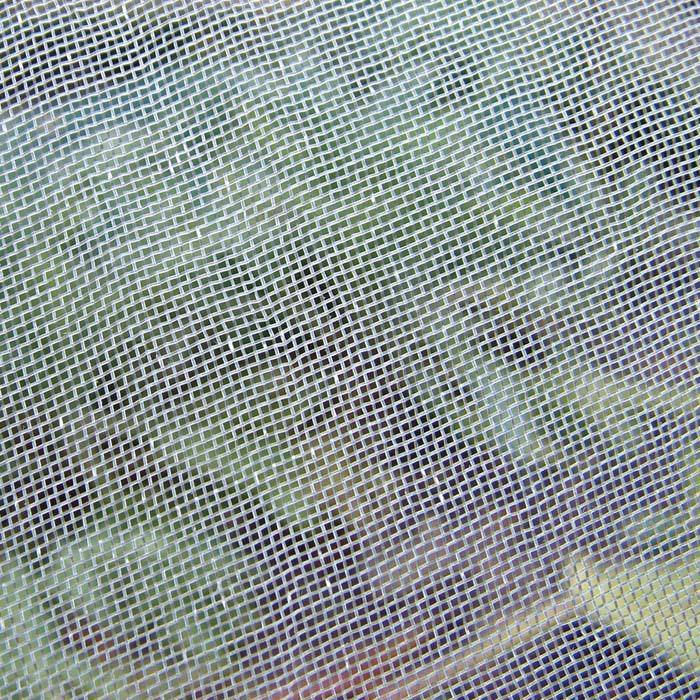 Designed to protect plants from smaller pests but will also stop butterflies and birds, insect mesh is available in 2 mesh sizes - standard to stop the majority of pests and ultra fine to stop even the tiniest of pests.
Designed to protect plants from smaller pests but will also stop butterflies and birds, insect mesh is available in 2 mesh sizes - standard to stop the majority of pests and ultra fine to stop even the tiniest of pests.
The mesh can be draped over plants to protect them from minute pests and can also be put over hoops to create cloche tunnels. 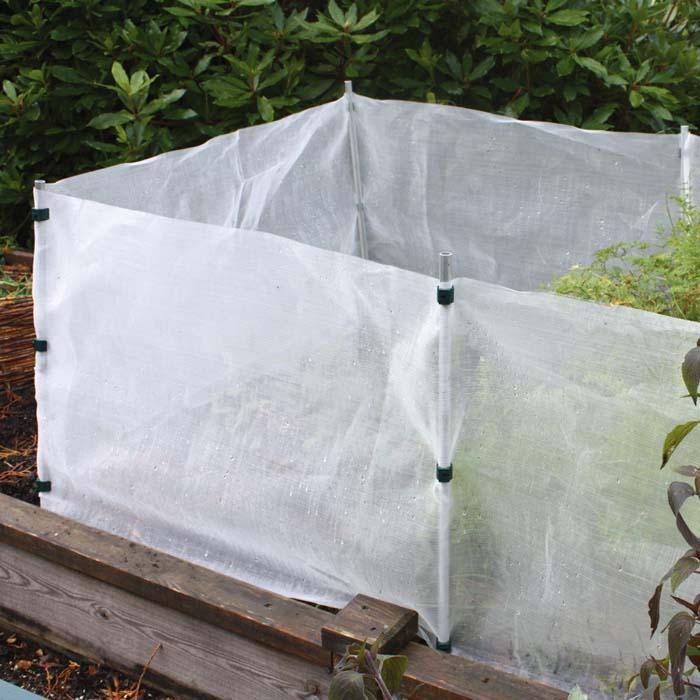
If Carrot Root Fly is a problem, then creating an insect mesh barrier around the carrots will help protect your plants from this damaging pest - our Carrot Root Fly Screen is just the answer.
Insect mesh will also offer some weather protection against heavy rain and hail and will also provide some shelter from high winds.
WINDBREAK & SHADE NETTING
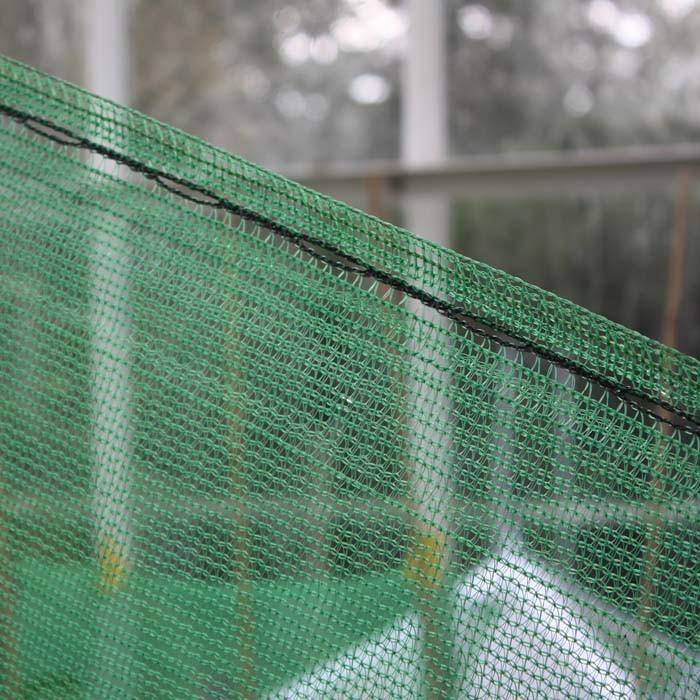 It's not only pests that can damage plants, the weather can also wreak havoc in the garden. Strong winds can damage plants and even strong rays from the sun can scorch plants, expecially in greeenhouses.
It's not only pests that can damage plants, the weather can also wreak havoc in the garden. Strong winds can damage plants and even strong rays from the sun can scorch plants, expecially in greeenhouses.
Windbreak netting is a simple, cost effective way to stop taller plants blowing over and preventing damage. Position the netting to act like a screen around plants and the mesh netting will act as a wind break protecting your plants.
The suns rays can scorch plants in the middle of summer, especially in greenhouses, and Shade Netting is a simple solution to protect plants from damaging rays. Shade netting can be fixed inside or outside the greenhouse and can also be used as a screen around plants outside if they are prone to scorching.
FLEECE
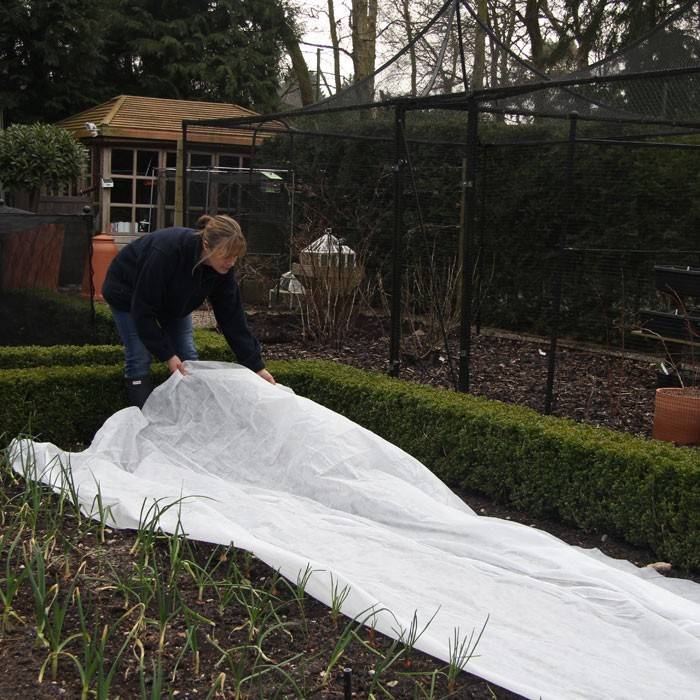 Frost can be very damaging in the garden, especially early and late in the growing season and just one frost can be enough to kill some plants, so it's important to be prepared.
Frost can be very damaging in the garden, especially early and late in the growing season and just one frost can be enough to kill some plants, so it's important to be prepared.
Garden Fleece is a great way to quickly protect plants. The Fleece can be draped over plants to create an insulating layer, protecting them when the mercury plunges.
Make sure you buy a good quality fleece though, check for UV stabilised and at least 30g weight as this will last. Lower quality fleece can quickly degrade and you will be replacing it each season.
Pot Jackets and Plant Jackets are also a great way to protect plants in cold weather. These can be fixed around the plant or pot to insulate the plant when temperatures plummet.
There are obviously some pests that we can't stop with netting, such as slugs and snails, for these types of pests we would advise using biological control such as Nemaslug nematodes. These are a safe and effective way to kill pests with no harmful by products making their way into the soil. We have a range of nematode products for different pests - have a look at our Nematode Range today.
Hopefully the advice helps you choose the right netting for your garden, it can be a very cost effective way of protecting your plants and ensuring a bigger, healthier harvest without the use of chemicals!
Happy Gardening!


















